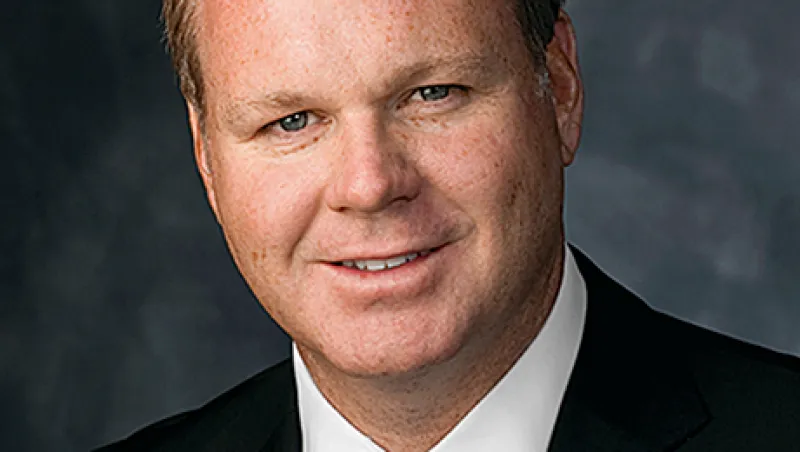When an investment technique works, it quickly spawns imitators. Take exchange-traded funds based on custom indexes — sometimes called smart beta, strategic beta or systematic beta. Andrew Arnott, president and CEO of John Hancock Investments, wanted his Boston-based firm to join this growing business, but only if it could distinguish itself. So Arnott took his time before Hancock’s September 2015 launch of six strategic-beta ETFs subadvised by Dimensional Fund Advisors.
Systematic-beta funds use custom benchmarks as an alternative to traditional passive funds, which generally track indexes that are market capitalization–weighted. ETFs are enormously popular with investors, but three firms dominate the pure-passive business: BlackRock, State Street Global Advisors and Vanguard Group.
Hancock, a subsidiary of John Hancock Financial, the U.S. arm of Toronto-headquartered Manulife Financial Corp., didn’t think it could break into the low-cost index fund industry, whose products primarily compete on price. But Arnott had watched younger clients fueling the rise of digital and automated advice services, most of which use ETFs for simplicity, and a growing number of brokerages and other intermediaries developing their own ETF model portfolios.
Hancock believed digital advice would allow firms that already distributed its funds to reach more and smaller clients cost-effectively. These channels could easily offer smart-beta strategies, a hybrid of active and passive management. In fact, 99 percent of 250 advisers polled for the latest annual U.S. Advisor Survey by ETF.com and asset servicer Brown Brothers Harriman & Co. said they would maintain or increase their use of smart-beta ETFs in the next year.
The 2015 survey showed a jump of 8 percent in the use of smart-beta products across U.S. advisers last year compared with 2014. It also revealed that 32 percent of advisers are replacing traditional passive products with smart-beta strategies and an additional 13 percent are swapping out active products. “This growth and usage suggests that channels that have adopted traditional cap-weighted ETFs in recent years are quickly adding smart-beta strategies to their models and portfolios,” says Ryan Sullivan, Boston-based vice president of global ETF fund services at BBH.
Investors and advisers have been warming to smart-beta funds for years, and asset managers have been only too happy to launch new products. In 2015 these passive-with-a-twist vehicles accounted for $60 billion of the $238 billion in assets gathered by ETFs worldwide, Bloomberg reports. Between 2009 and last year, smart-beta exchange-traded products (ETPs) in the U.S. grew from $61 billion to $377 billion, according to the NASDAQ Stock Market, which has created 97 unique indexes that are now tracked by 115 ETPs.
Arnott feared that an offering from $83 billion Hancock could get lost in a sea of new products. Smart-beta funds, even well-designed ones, use formulas to pick securities. A smart-beta fund’s unique story isn’t always as compelling as, say, the charismatic manager of an actively managed portfolio.
To set itself apart, Hancock hired Dimensional, the pioneer in strategic-beta and multifactor-based investing founded in 1981 by David Booth and Rex Sinquefield, who met at the University of Chicago’s business school, now called the Booth School of Business.
Booth and Sinquefield wanted the Austin, Texas–based firm’s investment philosophy to draw directly on the most up-to-date academic research. So they brought on economist Eugene Fama, a professor of finance at the Booth School and 2013 Nobel laureate in economic sciences known for his contributions to the Efficient Market Hypothesis, as a founding director. Fama and fellow director Kenneth French, a professor of finance at the Tuck School of Business at Dartmouth College and co-chair of Dimensional’s investment policy committee, developed the three-factor asset pricing model, which identifies market, size and price as the main impetuses of investment returns.
Multifactor investing is rooted in this and other academic research that isolates the factors driving stock returns over long periods. Dimensional, which requires its advisers to attend rigorous boot camps to learn its process and philosophy, designed unique indexes for Hancock’s new ETFs. For example, the John Hancock Multifactor Large Cap ETF tracks an index that targets the largest 750 to 800 U.S. companies based on market cap. Within that segment the benchmark emphasizes companies with smaller market cap, lower relative prices and higher profitability. The Dimensional indexes were also constructed to minimize trading costs.
Hancock, which uses outside managers and internal stock and bond pickers from parent Manulife to oversee the funds in its lineup, already had a $4 billion deal with Dimensional: The money manager subadvised several funds for Hancock, including emerging markets, international small-cap and international value. Arnott himself had led all relationships for Hancock and Manulife in the U.S. and Asia before becoming CEO in 2012.
After filing for the ETFs in 2009, Hancock was in no hurry to launch its first multifactor strategic-beta funds. In strategic beta, brand had yet to be defined, Arnott says: “We had the opportunity to offer investors the original engine, not a generic substitute.”
Hence the long wait. “It is crowded on the pure-passive side, and the concept of using factor-based models was getting crowded in itself,” Arnott explains. “We didn’t want to launch products that would just add to the noise.” Hancock plans to launch five more Dimensional-subadvised funds; they’re still in registration, and a launch date hasn’t been set.
By subadvising ETFs for Hancock, Dimensional, which offers only traditional mutual funds and other institutional accounts, gets the opportunity to reach a much wider audience. Hancock distributes funds through direct platforms like Charles Schwab & Co. and Fidelity Investments, as well as bank trusts, wire houses and financial planners. Arnott says Hancock’s ETFs will allow some wire houses, for example, to use Dimensional funds for the first time.
Still, even with a well-known subadviser, Hancock has gathered only about $97.6 million in assets. Intermediaries are increasingly holding all new funds to higher standards, including demanding longer track records or backtesting, or just distributing funds of a certain size. “The Field of Dreams strategy — build it and they will come — never works in this business,” Arnott says.
Follow Julie Segal on Twitter at @julie_segal.
Get more on exchange-traded funds.







